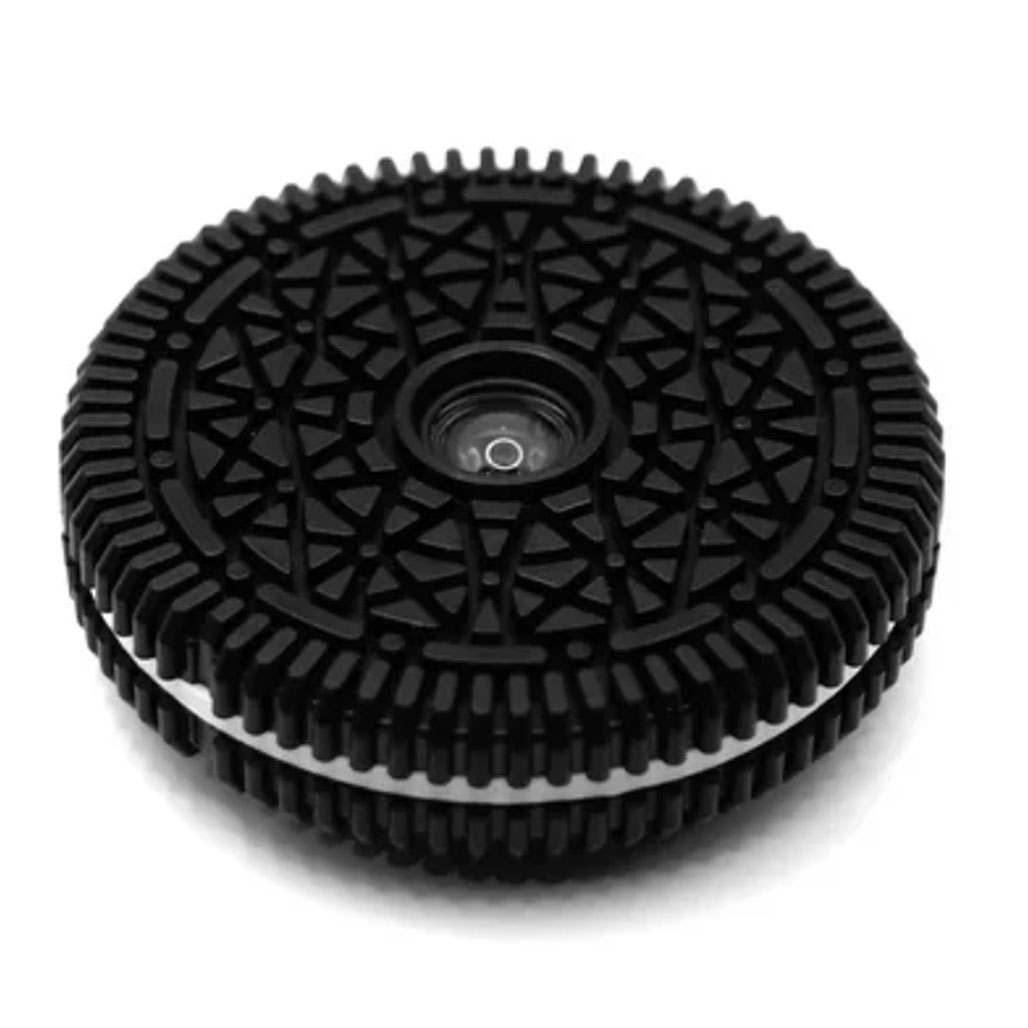Today’s Post by Joe Farace
Taking pictures is like tiptoeing into the kitchen late at night and stealing Oreo cookies.”— Diane Arbus
I like cookies. And like Snoopy, I’m not a fan of coconut cookies but love Christmas sugar cookies. This year Mary made me a small batch of sugar cookies using my mother’s recipe; they were yummy. (In case you’re wondering, on my dietician’s advice I was limited to two Christmas cookies a day—with tea. And speaking of cookies, you can read how my pal Barry Staver compares cookies and cakes to image file formats in his clever post—right here. What else do cookies have in common with photography? Let’s start with,,,
The Now Defunct Canon M Mount
Canon’s EF-M lens mount was introduced in 2012 and was a variation of their EF mount designed for EOS M mirrorless interchangeable-lens cameras. The M system mount has an 18mm flange focal distance and a 47mm throat diameter. It’s compatible with an APS-C-sized sensor and has the same crop factor (approximately 1.6x) as Canon’s EF-S lens mount. Although the mount was designed for a well-received series of cameras such as my Canon EOS M6 Mark II, the M-system itself was a flop. Part of the problem was that Canon issued relatively few lenses for this system although Sigma put together a nice trifecta of lenses and I wrote about them extensively starting with this post. Canon’s half-hearted attempt at a true mirrorless camera system faded as they launched the more professionally-oriented R-system and on October 19, 2023 the company discontinued the EOS-M cameras, saying “goodbye to EF-M.” Which brings me to…
The Cookie Lens
 Keks is a company best known for manufacturing compact light meters that slip onto the hot/cold shoe of meterless or non-working metered cameras and from what I hear around the Internet water color they seem to be pretty good. Turns our the company also make lenses. Not fancy lenses, for sure, but fun lenses that fit into the Holga-adjacent space.
Keks is a company best known for manufacturing compact light meters that slip onto the hot/cold shoe of meterless or non-working metered cameras and from what I hear around the Internet water color they seem to be pretty good. Turns our the company also make lenses. Not fancy lenses, for sure, but fun lenses that fit into the Holga-adjacent space.
The 30mm f/10 Keks lens is available in either Standard or Oreo versions and use recycled disposable Fujifilm camera optics transforming them into a no-focus body cap lens. The Standard lens is available for Leica M, L39, Fujifilm X, Sony E Mount, L Mount and Nikon Z Mount. The Oreo version is available in just Fujifilm X and EOS-M mounts, the later of which I ordered for $30 plus $7 airmail shipping from Hong Kong. The lens was nicely packaged and arrived in a timely manner.
The Keks lenses focal length of 30mm translates into 51mm on Canon M-series cameras. They have a minimum focusing distance of three feet to infinity. Keks says the lens “has the potential to be one of the best tools for street photography.” The fixed aperture and focus-free features ensure that you can capture every moment with ease.” But what’s it really like?
Field Test: Take 1
 After all the cold and snowy weather we’ve had lately, last Saturday morning the sun was shining and I decided it would be the perfect day to shoot the Oreo lens with my Canon EOS M6 Mark II. I attached the lens and headed to the Jacks and Ball sculpture at Discovery Park in Parker, Colorado. As I approached the sculptures I quickly realized the M6’s LCD screen was almost useless, unless I pressed my nose against the camera. I made a note to attach the retro-styled auxiliary EVF-DC2 viewfinder next time. I framed what look like a nice composition and tripped the shutter or rather tried to trip the shutter. It didn’t work. I sat on a bench and noticed the AF/MF lever was set to AF and this is most assuredly a MF lens. Tried again. Shutter button wouldn’t work. Then I noticed something on the screen: The battery icon was red and blinking. Duh!
After all the cold and snowy weather we’ve had lately, last Saturday morning the sun was shining and I decided it would be the perfect day to shoot the Oreo lens with my Canon EOS M6 Mark II. I attached the lens and headed to the Jacks and Ball sculpture at Discovery Park in Parker, Colorado. As I approached the sculptures I quickly realized the M6’s LCD screen was almost useless, unless I pressed my nose against the camera. I made a note to attach the retro-styled auxiliary EVF-DC2 viewfinder next time. I framed what look like a nice composition and tripped the shutter or rather tried to trip the shutter. It didn’t work. I sat on a bench and noticed the AF/MF lever was set to AF and this is most assuredly a MF lens. Tried again. Shutter button wouldn’t work. Then I noticed something on the screen: The battery icon was red and blinking. Duh!
Field Test: Take 2
Even with those two items addressed, one more hurdle awaited me before I could actually trip the shutter: To use the Oreo lens on any Canon M-series camera I had to dive into the Custom Functions III Settings menu and Enable “Release Shutter w/o Lens.” I’m sure there is a similar setting for Fujifilm cameras but you’ll have to dig through the menus or do what I did, find a YouTube video that explains it.
The next day was beautiful, although windy, and Mary and I headed to Discovery Park and made some images of the Jack and Balls sculptures. The EVF-DC2 helped but the sun was at an angle that Mary blocked with her hat so I could actually see what the image looked like. Mary even made a few portraits of me with the giant Jacks using the EOS M6 Mark II and Oreo lens. (I posted one on Instagram where you can see it.) Then we headed down to McCabe Meadows, mostly for some therapeutic walking, but I made a few images with the Oreo lens and really enjoyed the experience.
My Take
The EOS M6/Oreo combination was fun to use; I simply composed the image and clicked the shutter. The results might be called Holga-adjacent but the images are much sharper than I anticipated. And while the Keks lens lacks any kind of focusing ability ,the focusing mechanism fond on a Holga lens is laughable at best while the Oreo lens produced a technically better looking image, which may or may not be your jam.
Look for more on this lens in the future: This is the best $30 optical investment I’ve made and that second shoot produced lots of interesting images and the fun factor was really high. I’m looking forward to doing more with this lens/camera combo especially when the Parker Farmer’s Market restarts in the spring. I think this lens may be my ticket to creating some decent (for a change) street photography, In the meantime, I’m just having fun, which is always been the focus of this blog.
 If you enjoyed today’s blog post and would like to buy Joe a cup of Earl Grey tea ($3.50), click here.
If you enjoyed today’s blog post and would like to buy Joe a cup of Earl Grey tea ($3.50), click here.
Along with photographer Barry Staver, Joe is co-author of Better Available Light Digital Photography with new copies are available from Amazon for $21.50 and used copies starting around five bucks.